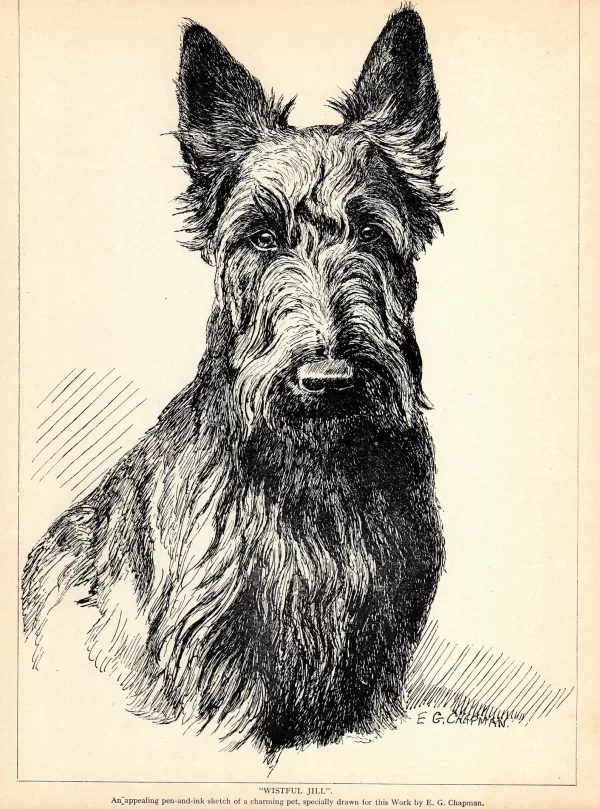
The Old Scotch Terrier
In the beginning of the 19th century, many different terriers could be found in Scotland, different coats, sizes and colors among them. By the end of the century, these terriers would be separated into different, but rather broad groups. To wit: Several of today’s terrier breeds were all once regarded as “Skye Terriers,” which fell under an even broader category of “Scotch Terriers,” and not to complicate things, but at the Birmingham Dog Show of 1860 (the first show to allow terriers), the Scotch Terrier classification had within it groupings identified by color. Brian Cummins wrote in his book, Terriers of Scotland and Ireland, that these colors included blue Scotch, fawn Scotch, and white Scotch.
In time, obvious distinctions between the terriers lead to further divisions, and the Cairn Terrier, West Highland White Terrier, Scottish Terrier and Skye Terrier would be accorded individual breed status, but they had a common ancestor in the Old Scotch Terrier, now extinct. The Old Scotch was described as black or sandy-colored with a rough, wiry textured coat, low in stature, strong, and with small, half-prick ears. Especially to the liking of the people who kept an Old Scotch was the resilient, strong, and courageous nature of the dog believed to have been the foundation dog for all of today’s terrier breeds.
Out of this broad category of Scotch Terriers, the first “variety” mentioned by Thomas Brown in his Biographical Sketches and Authentic Anecdotes of Dogs of 1829 was the Scottish Terrier; according to John T. Marvin, author of The Book of All Terriers, the Scottie was only the third breed to gain distinct identify of all the terrier breeds derived from the Old Scotch. It was also the most popular.
We make short work of the controversies surrounding Scottish Terriers of the 19th century by side-stepping them altogether. Mostly, they centered over what a Scottish Terrier really was. Some believed it was the Cairn Terrier. Others, such as one Captain Gordon Murray writing under the name, “Strathbogie,” felt that he knew what a true and genuine Scottish Terrier was, and it wasn’t the Cairn Terrier. Chapters in books have been written about the lively debate at the time, and we leave it to readers to seek them out on books already mentioned here.
We choose instead to conclude with a quote from William Haynes: “All dogs are good; any Terrier is better. A Scottish Terrier is the best.”
Image: Scottish Terrier CH Wistful Jill by E. G. Chapman, an antique page from a vintage 1930’s book offered by Ginny of plaindealing is available here
